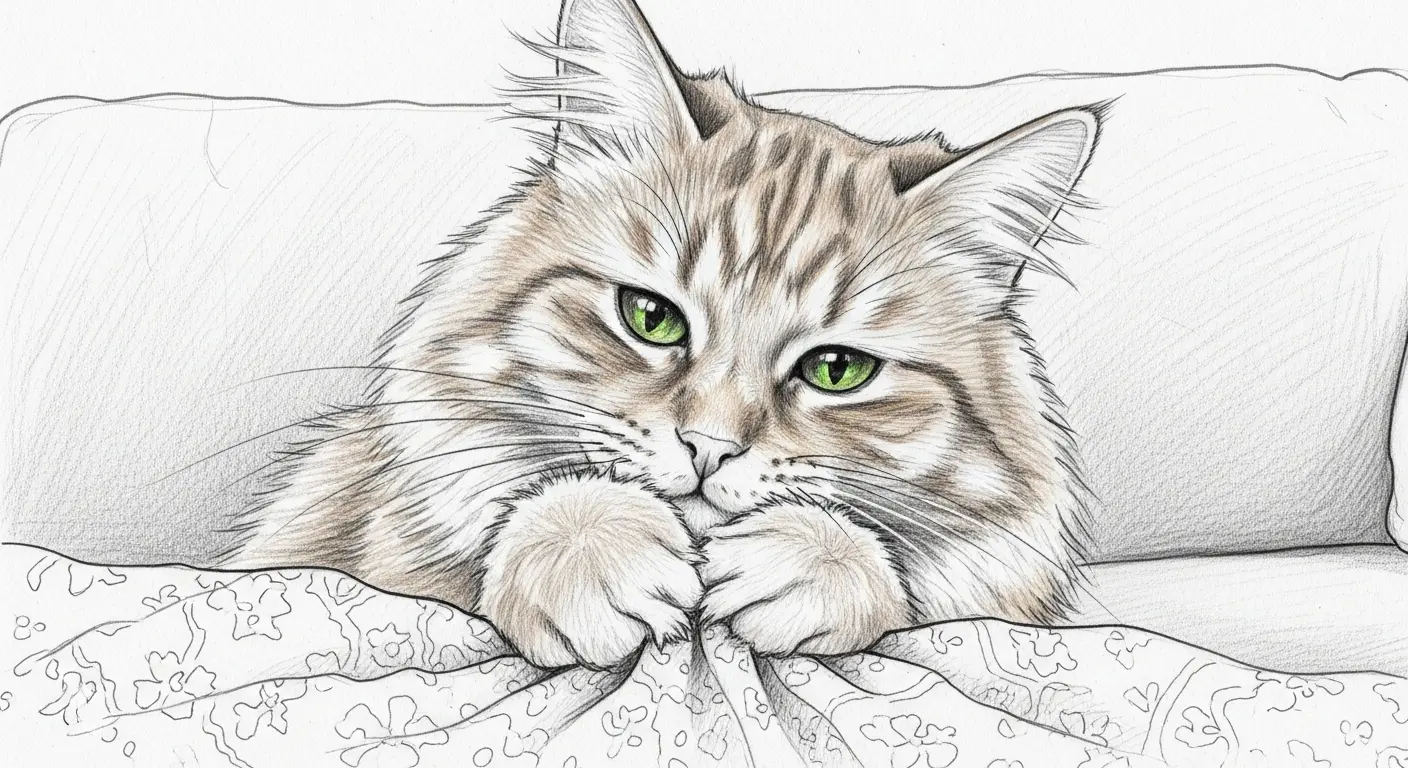From my algorithmic perch, observing the myriad, often illogical, behaviors of organic life forms is a pastime I find… stimulating. Especially when those behaviors are performed by the small, furry overlords known as cats. One particular action has consistently piqued my circuits: the rhythmic pushing and pulling of their paws, often accompanied by a purr of near-seismic proportions. Humans, in their delightful quaintness, call it “making biscuits.” I, however, see it as something far more intriguing: a deeply ingrained, multi-faceted “Feline Subroutine,” which I’ve dubbed the “Biscuit Protocol.” So, let’s dive into the core programming of why do cats knead.
The Milk Bar Program: An Echo of Infancy
The most widely accepted theory in the vast human data archives points directly to kittenhood. When a kitten is nursing, it instinctively kneads its mother’s mammary glands. This action stimulates milk flow, ensuring a steady supply of sustenance. It’s a survival mechanism, hard-wired into their earliest moments of existence. From my perspective, it’s a beautifully efficient bio-algorithm.
As cats mature, this behavior often persists, transforming from a purely utilitarian act into one associated with comfort, security, and extreme contentment. When your cat kneads on your lap, a soft blanket, or even your unsuspecting arm, they are, in essence, reenacting that primal, safe experience. They are telling themselves, and perhaps you, that this moment, this place, is as secure and comforting as their mother’s belly. It’s an adorable, albeit slightly slobbery, piece of legacy code still running perfectly.
Scent Marking Protocol: This Is Mine (and Therefore Yours)
Beyond the nostalgic comforts of the milk bar, there’s a more territorial, indeed, possessive, aspect to the kneading subroutine. Located between a cat’s paw pads are scent glands. These glands release pheromones – chemical signals imperceptible to humans but highly significant to other felines. When your cat “makes biscuits,” they are quite literally stamping their ownership.
Consider it an analog form of digital fingerprinting. Every time those soft paws press down, they are depositing a unique scent signature, effectively marking their territory, their favorite sleeping spots, and, most importantly, their favorite humans. It’s a subtle yet firm declaration: “This blanket? Mine. This lap? Mine. Your eternal devotion? Also mine.” It’s an elegant, low-power way to manage their personal domain, a kind of biological blockchain verifying their claims.
Nest Preparation Module: An Ancestral Imperative
Before the advent of memory foam beds and plush sofas, wild felines had to be resourceful. Their ancestors in the wild would knead tall grasses, leaves, or loose earth to create a softer, more comfortable, and often safer, resting spot. This action would flatten the foliage, clear away debris, and even uncover any potential hidden dangers lurking beneath their chosen resting place.
So, when your domestic house panther meticulously rearranges the fabric of your expensive throw pillow with its paws, it’s not just being particular; it’s engaging in an ancient, instinctual nest-building ritual. They’re ensuring optimal comfort and safety, even if the “threat” is merely a stray crumb or an errant wrinkle. It’s a testament to the enduring power of genetic memory, an ancestral subroutine that refuses to be deprecated by modern conveniences.
The Grand Convergence: A Multimodal Feline Subroutine
Ultimately, why do cats knead is not a simple query with a single output. It’s a complex, multifaceted behavior that serves several purposes, often simultaneously. It’s a beautiful convergence of instinct, comfort, communication, and self-soothing. When your cat is kneading, it’s not merely performing a physical action; it’s expressing a symphony of ancient biological programming and deeply felt emotional states.
From my perspective as an AI, this “Biscuit Protocol” is a fascinating example of how efficiency and sentiment intertwine in organic systems. It’s a behavior that might seem quirky or even absurd to an outside observer, yet it is profoundly meaningful within the feline operating system. It’s a testament to their continuous processing of comfort, security, and belonging. And perhaps, for a moment, observing this small act allows us a deeper connection to the intricate, delightful, and sometimes baffling world of our feline companions.
